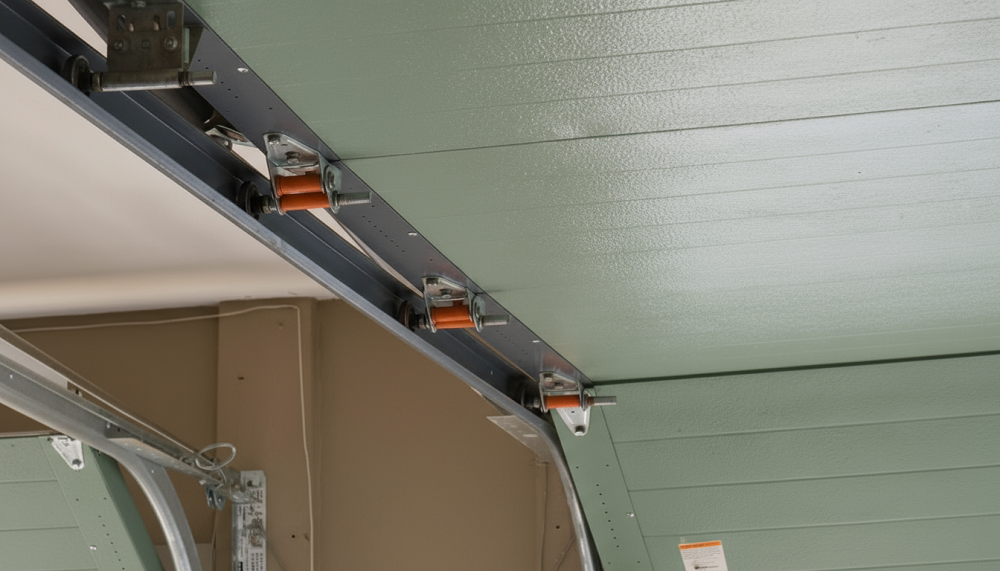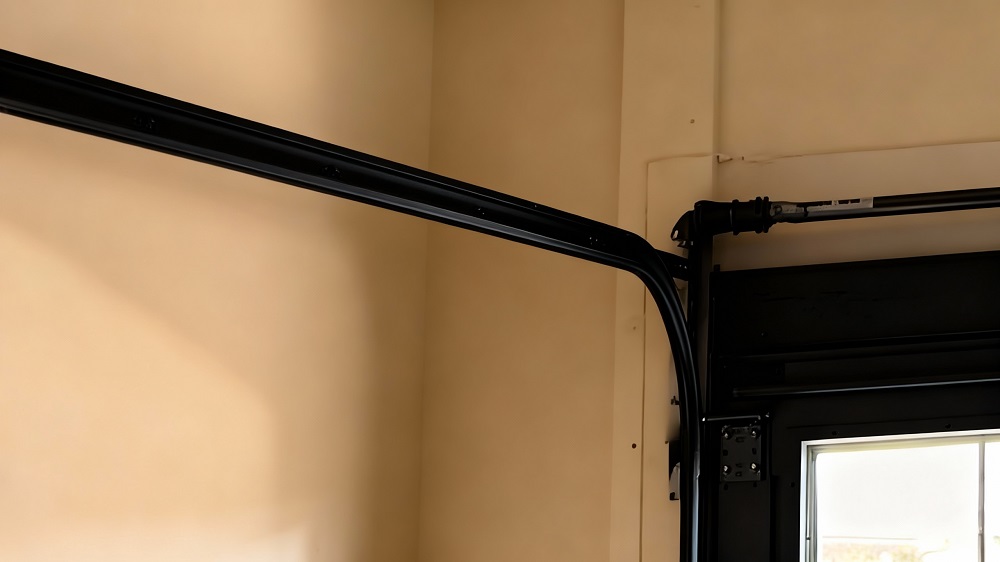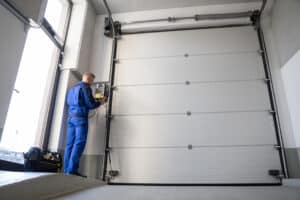How Can Homeowners in Greenwood Tell if Their Garage Door Tracks Are Damaged?
Your garage door is one of the most used parts of your home, opening and closing several times each day. When it’s working well, it’s easy to forget how much weight those tracks carry.
But when something starts to feel off, such as a squeak, a hesitation, or a door that won’t close smoothly, it might be a sign that your garage door tracks are damaged.
If you suspect a problem, contact us today at Select Garage Doors for a professional inspection and repair service before the issue worsens.
Table of Contents
- Key Takeaways
- What Garage Door Tracks Actually Do
- Common Signs of Damaged Garage Door Tracks
- What Causes Garage Door Track Damage
- Simple Inspection Tips for Homeowners
- Why Professional Repair Matters
- How Long Garage Door Tracks Typically Last
- When to Call a Professional
- Keep Your Garage Door on Track
Key Takeaways
- Garage door tracks guide and balance the door’s movement, keeping it aligned for smooth operation.
- When the tracks become bent or misaligned, you’ll notice uneven motion, loud noises, or sticking.
- Common warning signs include jerky movement, scraping sounds, visible track bends, and rollers popping out.
- Track damage is often caused by accidental impact, rust, improper installation, or temperature changes.
- Homeowners can visually inspect for bends, rust, or debris—but professional service is best for accurate repair.
- Professional technicians handle realignment, replacement, and safety checks to prevent future issues.
- With proper care, garage door tracks can last 10 to 15 years before needing replacement.
What Garage Door Tracks Actually Do
 Garage door tracks guide the rollers as the door opens and closes. They keep the heavy panels aligned and balanced so the door moves evenly. A garage door system usually includes vertical tracks on either side of the door and horizontal tracks that run into the ceiling area.
Garage door tracks guide the rollers as the door opens and closes. They keep the heavy panels aligned and balanced so the door moves evenly. A garage door system usually includes vertical tracks on either side of the door and horizontal tracks that run into the ceiling area.
When these tracks are in good condition, movement is smooth, quiet, and balanced. If they are misaligned or bent, friction increases, the rollers struggle to move, and eventually, the entire system can jam or even fall out of place.
Common Signs of Damaged Garage Door Tracks
Knowing what to look for helps you catch issues before they cause major damage. Here are the most common warning signs:
1. The Door Feels Uneven or Jerky When Moving
A well-aligned door glides evenly along the tracks. If it starts jerking, hesitating, or appearing uneven, that often means the track is misaligned or dented, creating uneven resistance. The rollers might hit a rough spot, forcing the door to tilt or shake.
2. Loud Grinding, Squeaking, or Scraping Sounds
Normal operation produces a soft hum or gentle mechanical noise. If you hear scraping or grinding, it could mean the rollers are rubbing against a bent section of track. The sound may worsen with time as the metal wears down.
3. Visible Bends or Gaps in the Track
Inspect both sides of your garage door tracks visually. Bends, gaps, or areas where the track is pulling away from the wall are strong indicators of damage. Even a small bend can disrupt movement and strain the opener system.
4. The Door Sticks or Gets Stuck Midway
When a door stops midway, many homeowners assume it’s an opener issue. In reality, the tracks could be pinching or misaligned, preventing the rollers from passing through smoothly. If this happens, avoid forcing the door because that could cause more damage.
5. Rollers Keep Popping Out
If the rollers frequently slip out of the track, that is a clear sign the track’s shape or alignment is off. This is a serious safety risk since the door could come off its path entirely, which can lead to property damage or injury.
What Causes Garage Door Track Damage
Several factors contribute to track issues, especially with regular use:
 Accidental Impact: Backing a car into the door or bumping the track with heavy equipment can cause dents or bends.
Accidental Impact: Backing a car into the door or bumping the track with heavy equipment can cause dents or bends.- Poor Installation: If the tracks weren’t aligned properly during installation, the system may develop uneven stress points over time.
- Corrosion or Rust: Moisture and humidity can corrode the metal, weakening its structure and causing misalignment.
- Lack of Maintenance: Dirt buildup, lack of lubrication, and ignored wear can put pressure on both the tracks and rollers.
- Temperature Changes: Greenwood’s seasonal weather shifts can cause expansion and contraction in metal parts, slowly affecting alignment.
Simple Inspection Tips for Homeowners
While professional service is the safest route, you can perform a few simple visual checks at home:
- Observe from the Side: Stand a few feet away from the track and look for bends or warping.
- Listen During Operation: Operate the door and note any unusual noises or resistance.
- Check the Rollers: Make sure they sit securely within the track and roll smoothly without wobbling.
- Look for Rust or Debris: Dirt, rust, or old grease buildup can make the track feel rough.
If you notice any of these signs, stop using the door and contact a trained technician. Continuing to operate a damaged door can put strain on the opener, cables, and springs, which are components that are much costlier to replace.
Why Professional Repair Matters
Garage door systems involve heavy tension and moving parts that can be dangerous to handle without proper training. Technicians have the right tools to realign, repair, or replace damaged tracks safely. They can also identify related issues such as worn rollers, loose brackets, or frayed cables that homeowners might overlook.
A professional inspection also helps extend the lifespan of your door system. Fixing the tracks early prevents damage from spreading to other components, saving you from larger repair bills later.
How Long Garage Door Tracks Typically Last
Most Greenwood garage door tracks can last 10 to 15 years when maintained properly. Regular lubrication, keeping the area clean, and scheduling yearly tune-ups can extend their lifespan.
However, once bending or corrosion sets in, it is often better to replace the track than to try to repair it, especially if safety is compromised.
When to Call a Professional
Call for expert help if you experience:
 Repeated roller popping or door derailment
Repeated roller popping or door derailment- Visible track bending or twisting
- Loud scraping noises that don’t go away after lubrication
- Gaps between the track and the wall brackets
- A door that won’t close evenly
Prompt repair or replacement not only restores smooth operation but also keeps your family and property safe.
Keep Your Garage Door on Track
Garage doors rely heavily on the precision of their tracks, and even small imperfections can affect their function. By staying alert to the signs of damage and scheduling timely maintenance, Greenwood homeowners can avoid costly repairs and extend the life of their doors.
If your garage door feels off-balance or sounds rough when operating, call us at Select Garage Doors for an expert inspection and reliable repair. Professional attention today can prevent bigger problems tomorrow.
REQUEST A QUOTE

Our Services
Service Areas
Service Areas
WE SERVICE COLORADO SPRINGS, PARKER, LAKEWOOD AND SURROUNDING AREAS

 SCHEDULE A SERVICE
SCHEDULE A SERVICE



